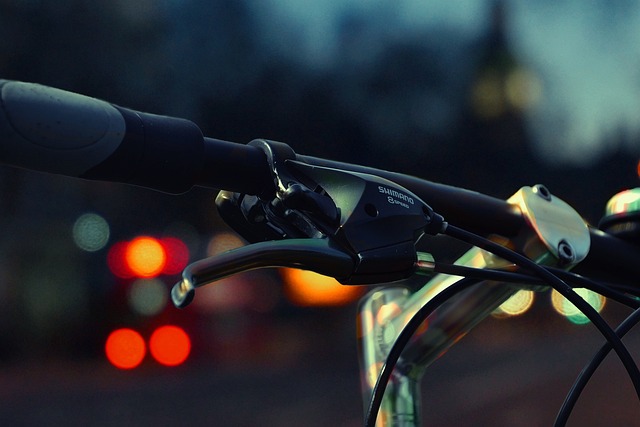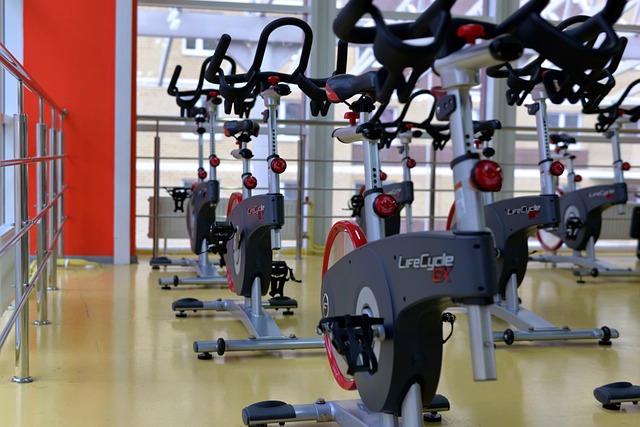
When cycling at night, visibility is paramount for safety, and flashlights designed specifically for night cyclists play a critical role in both illuminating the path and enhancing rider conspicuity. A high-lumen flashlight ensures clear path illumination to spot obstacles and wildlife, while dynamic lighting patterns like strobe or pulse modes can extend battery life and make cyclists more visible. Reflective gear complements these lights, ensuring that riders are seen by vehicles during low-light conditions. The best flashlights for night cycling and biking offer durable, waterproof construction and multiple operational modes to cater to different environments, from city streets to rural trails. These features not only increase visibility but also provide confidence and safety, making night riding a secure and engaging activity. With the right combination of lighting and reflective materials, cyclists can navigate with ease, preventing accidents and ensuring a memorable experience under the stars.
Navigating city streets or traversing off-road trails, night cycling presents unique challenges. Ensuring visibility and safety under the cover of darkness is paramount for any cyclist. This article illuminates the critical role flashlights play in enhancing nighttime bike rides. We’ll explore the essential features to look for in flashlights designed for night cycling, recommend top-rated options, and guide you through optimal light placement strategies. From understanding lumens and beam distance to integrating reflective gear, learn how to choose the best equipment for a bright, secure ride. Join us as we shed light on the importance of bright illumination for confident, safe nighttime cycling adventures.
- Understanding the Importance of Visibility during Nighttime Cycling
- Key Features to Look for in Flashlights for Cyclists
- Top-Rated Flashlights for Enhancing Biking Safety at Night
- Strategies for Effective Light Placement on Your Bike
- The Anatomy of a Quality Bicycle Headlight: Lumens, Beam Distance, and Modes
- Integrating Reflective Gear with Your Flashlight for Maximum Visibility
- Real-World Applications: How Bright Light Enhances Safety and Confidence on Night Rides
Understanding the Importance of Visibility during Nighttime Cycling

Cycling at night presents unique challenges, primarily due to reduced visibility. As daylight gives way to darkness, cyclists must rely on artificial lighting to ensure they are seen by motorists and other road users. Flashlights for night cycling serve a dual purpose: they illuminate the path ahead and increase the cyclist’s conspicuity. The importance of visibility during nighttime rides cannot be overstated; it is a matter of safety and awareness. A robust flashlight not only helps in navigating poorly lit areas but also in being noticed by others, which is critical for avoiding potential accidents. Cyclists should opt for lights with high lumen output to maximize the distance their light beam travels, ensuring both path visibility and personal visibility from multiple angles. Additionally, incorporating flashlights that feature dynamic lighting patterns, such as strobe or pulsing modes, can significantly enhance a cyclist’s presence on the road, making them more noticeable to drivers who may be distracted or fatigued. The strategic placement of these lights, often on helmets, handlebars, and pedals, further amplifies their effectiveness, creating a comprehensive lighting system that addresses both seeing and being seen.
Key Features to Look for in Flashlights for Cyclists

When embarking on night cycling or biking adventures, the visibility and safety of the route are paramount. A reliable flashlight is an indispensable tool for any cyclist who rides after dark. To ensure a safe and enjoyable ride, it’s crucial to consider several key features in flashlights designed for night cycling and biking. Firstly, lumen output is a significant factor; a higher lumen flashlight will illuminate the path more brightly, enhancing visibility of obstacles and improving overall safety. Additionally, beam distance is equally important as it determines how far ahead you can see. A long-distance beam allows cyclists to anticipate turns, changes in terrain, and the presence of wildlife or other riders.
Durability and weight are also key considerations for flashlights used while biking. The best flashlights for night cycling and biking are those that offer a balance between brightness and portability without compromising on sturdiness. Impact resistance and waterproofing are non-negotiable, as they protect the light from accidental drops or exposure to moisture, which can be common in outdoor conditions. Furthermore, battery life is a critical feature; long-lasting batteries ensure that you have consistent light throughout your journey, avoiding the need for frequent replacements or the risk of being left in darkness. Look for flashlights with energy-efficient LEDs and rechargeable batteries to maximize performance. Lastly, user-friendly features such as adjustable brightness settings, easily accessible switches, and versatile mounting options complete the must-haves for a cyclist’s nighttime companion. Flashlights For Night Cycling And Biking should be designed with the cyclist’s needs in mind to provide a secure and visible light source during evening or early morning rides.
Top-Rated Flashlights for Enhancing Biking Safety at Night

When night falls and cyclists take to the roads, visibility becomes paramount for safety. A reliable flashlight is an indispensable tool for any biker who wishes to enhance their visibility during night rides. The top-rated flashlights designed for night cycling and biking are engineered with bright LED beams that cut through the darkness, ensuring that you are seen by motorists. These flashlights often come with multiple modes, including high, medium, and low intensity settings, allowing cyclists to adapt their lighting needs based on the ambient light conditions and battery life considerations. The high-intensity settings are particularly useful for those riding in unlit areas or during early morning hours when dawn is just breaking. Additionally, many of these flashlights are equipped with durable designs and water-resistant features, making them suitable for various weather conditions. Whether mounted on the handlebar or worn on the helmet, the best flashlights for night cycling and biking provide a beam that not only lights the path ahead but also makes the rider more conspicuous to others on the road, thereby contributing to a safer riding experience. Cyclists should consider factors such as lumens output, battery life, weight, and mounting options when selecting a flashlight to ensure it meets their specific needs for night biking safety.
Strategies for Effective Light Placement on Your Bike

When embarking on night rides, strategically placing lights on your bicycle is paramount for both safety and visibility. Flashlights attached to your handlebars or helmet can illuminate the path ahead, casting a bright beam that reveals potential hazards and road irregularities. Positioning these lights at a height where they align with your line of sight ensures maximum effectiveness. Additionally, mounting a bright headlight directly in front of your wheel can enhance your ability to see where you’re going, while also making you more noticeable to motorists and pedestrians. Reflective materials on your bicycle, helmet, and clothing complement these lights by reflecting any ambient light back, increasing your conspicuousness during low-light conditions. Rear lights are critical as well; they should be placed at the back of the bike, facing outward, to alert following vehicles of your presence. Reflectors can be added to your spokes and pedals for an additional layer of safety, creating a dynamic visual effect that can be seen from multiple angles. The goal is to create a light pattern that not only guides you safely through the night but also alerts others of your position on the road. By integrating flashlights with conventional bike lights, you enhance your overall visibility and reduce the risk of nighttime accidents.
The Anatomy of a Quality Bicycle Headlight: Lumens, Beam Distance, and Modes

When embarking on night rides, the safety and clarity of the path ahead are paramount. A pivotal tool in ensuring visibility during these excursions is a robust bicycle headlight. The quality of a headlight is often determined by its lumen output, beam distance, and the variety of operational modes it offers. Lumens, a measure of luminous flux, indicate how much light a headlight emits per unit of solid angle, which translates to how brightly it illuminates the road. For night cycling enthusiasts, a headlight with a high lumen count is essential for cutting through darkness and allowing riders to see potential hazards, such as potholes, debris, or wildlife, from a distance. The beam distance complements lumens by determining how far the light will effectively reach. A longer beam distance ensures that riders can navigate not only their immediate surroundings but also can see further down the path or trail, enhancing their ability to react to changes in the environment.
In addition to lumens and beam distance, the versatility of modes a headlight offers can significantly impact the cycling experience. Flashlights for night cycling and biking often come with multiple modes, including high, medium, and low settings, as well as pulsating or strobe options. These various modes extend the battery life when less light is needed and provide higher intensity illumination when more light is crucial, such as riding through unlit areas. The ability to adjust the brightness and pattern of the light allows riders to tailor their visibility needs to the specific conditions they encounter, from urban streetlights to isolated trails. Such adaptability ensures that whether the ride is short or long, the headlight will perform optimally, contributing to a safer and more enjoyable nighttime cycling experience.
Integrating Reflective Gear with Your Flashlight for Maximum Visibility

When venturing out on night rides, whether by bicycle or night cycling, safety should be your top priority. Enhancing visibility is crucial for protecting yourself from both vehicular traffic and unexpected obstacles. To achieve maximum visibility, consider integrating reflective gear with your flashlight—a strategy that combines the passive reflectivity of retroreflective materials with the active illumination of a quality flashlight. Reflective gear, often in the form of vests, helmets, or anklets, uses a material that reflects light back to its source, ensuring you are seen by oncoming traffic. Pairing this with a flashlight for night cycling and biking not only signals your presence but also allows you to clearly see your path ahead. The best flashlights for night cycling and biking are those with high lumen output and multiple modes, including steady beams and flashing patterns that can increase your conspicuity from afar. When selecting a flashlight, look for models with durable construction and water resistance to ensure they remain operational regardless of weather conditions. By combining the consistent visibility offered by reflective gear with the directed beam of a flashlight, you significantly enhance your safety while enjoying the night’s quietude. This dual approach provides a comprehensive lighting solution that ensures cyclists are both seen by others and can see where they are going, making night rides safer and more enjoyable.
Real-World Applications: How Bright Light Enhances Safety and Confidence on Night Rides

When embarking on night rides, whether by bicycle or during nocturnal excursions on foot, the importance of illumination cannot be overstated. Flashlights for night cycling and biking serve as indispensable tools for enhancing safety and instilling a sense of confidence in the dark. The right luminescence not only reveals potential obstacles such as potholes, debris, or uneven terrain but also illuminates one’s path, allowing riders to navigate with greater precision and awareness. This is crucial for preventing accidents that can occur due to poor visibility. Moreover, bright light acts as a deterrent against nocturnal predators or hazardous wildlife, ensuring riders are seen and have clear sight of their surroundings. Incorporating high-quality flashlights into one’s gear for night riding not only makes the experience safer but also more enjoyable by reducing anxiety about the unknown that darkness can bring. The strategic placement of lights on bicycles, such as a headlight for the front and reflectors or taillights for the rear, enhances visibility to motorists and pedestrians alike. This visibility is paramount, as it ensures that riders are recognized as human beings sharing the road, not shadows or silent entities that could be overlooked in low-light conditions. The technological advancements in flashlights for night cycling and biking offer a range of light intensities and beam patterns to suit various environments, from urban streets to remote trails. These enhancements make night riding not just an activity of necessity but one of leisure and adventure, where safety and confidence are the foundations upon which enjoyable experiences are built.
In concluding, the importance of visibility during nighttime cycling cannot be overstated. Equipping oneself with a reliable flashlight tailored for night cycling, such as those detailed in this article, is a critical safety measure. Key features like lumen output, beam distance, and versatile modes in a headlight are pivotal in ensuring you are seen by motorists and pedestrians alike. Complementing your lighting setup with reflective gear further amplifies your visibility, enhancing both safety and confidence on night rides. For cyclists committed to safe night riding, investing in the right flashlights for night cycling and biking is not just a preference—it’s a smart choice for those who prioritize their well-being on the road after dark.







